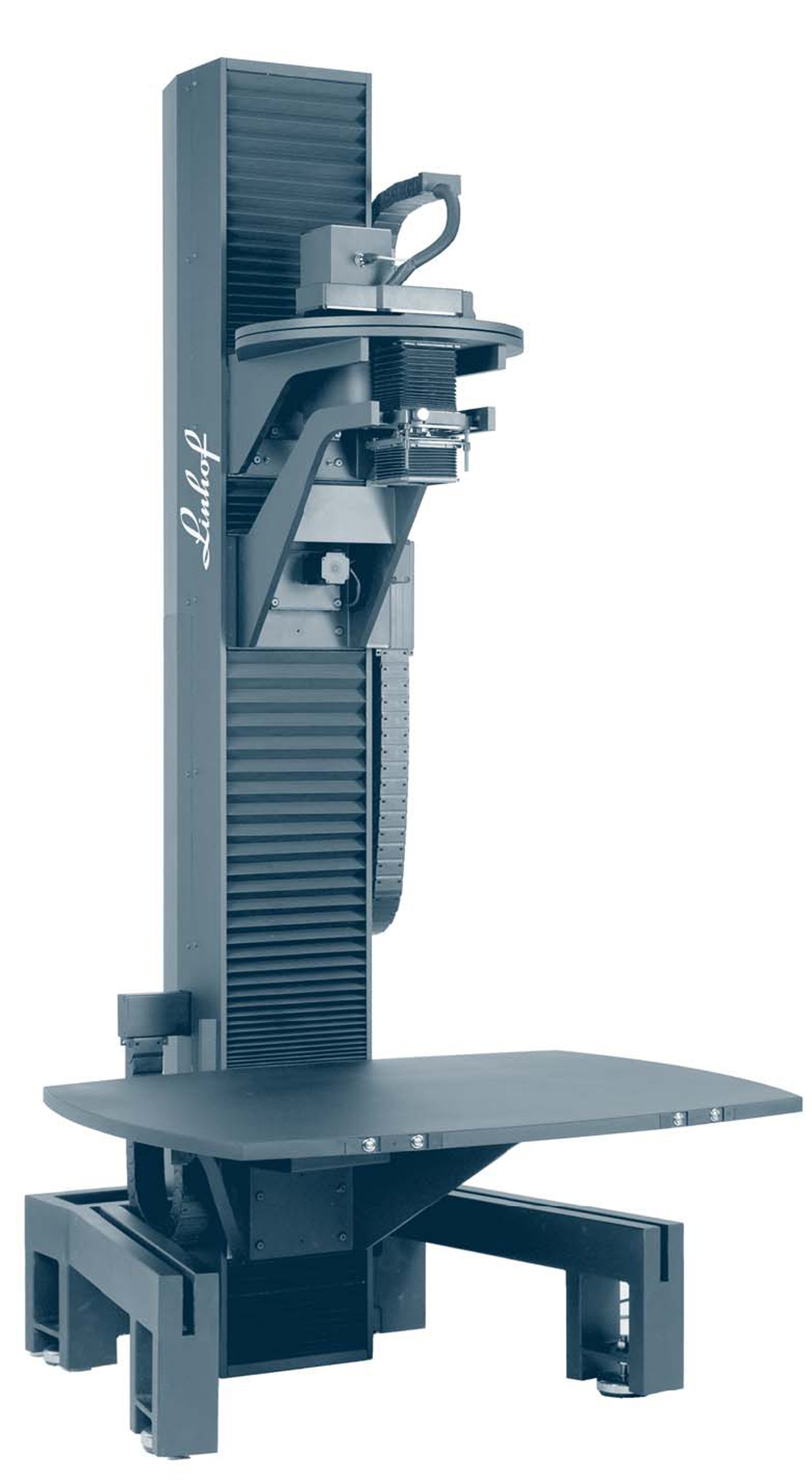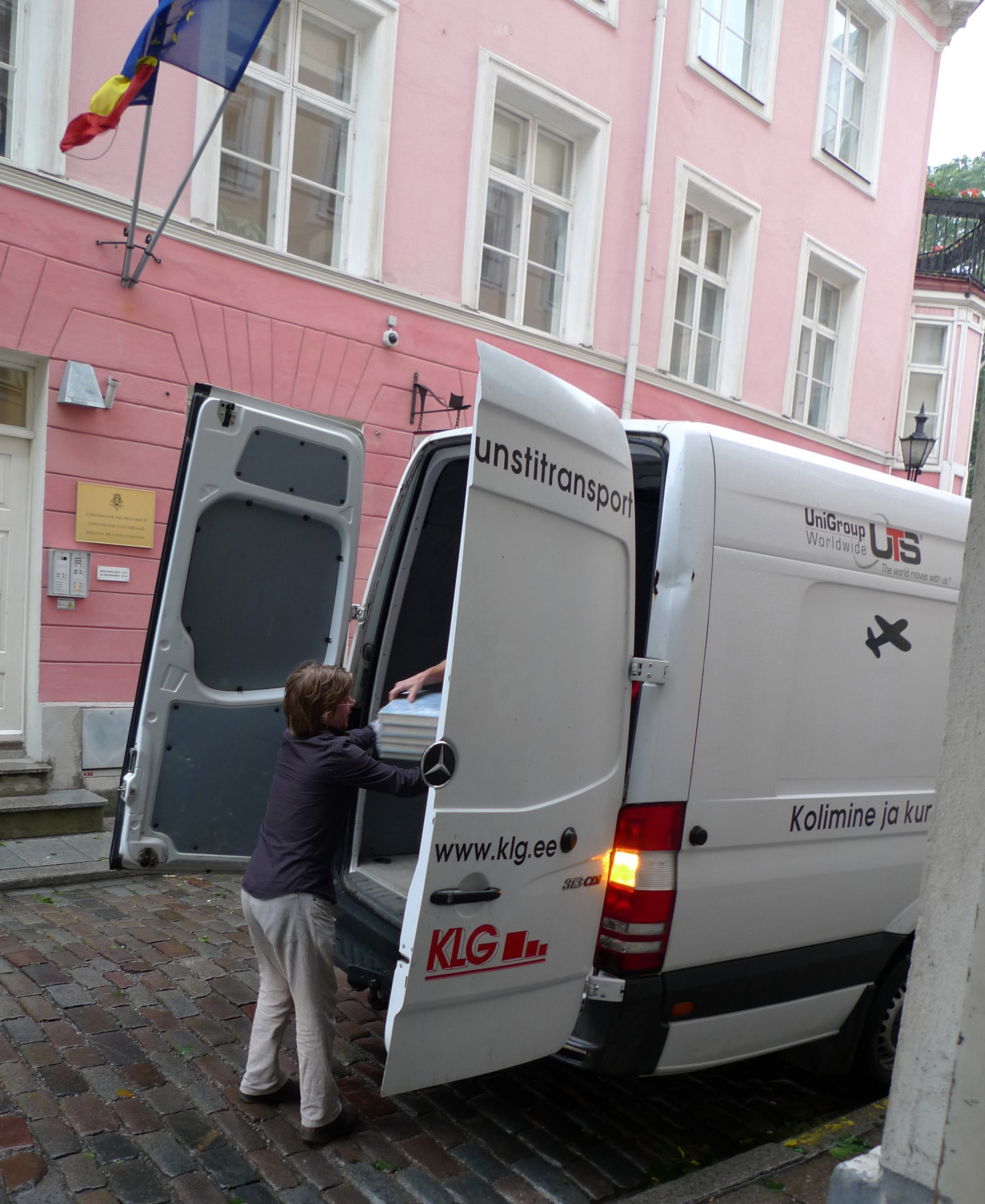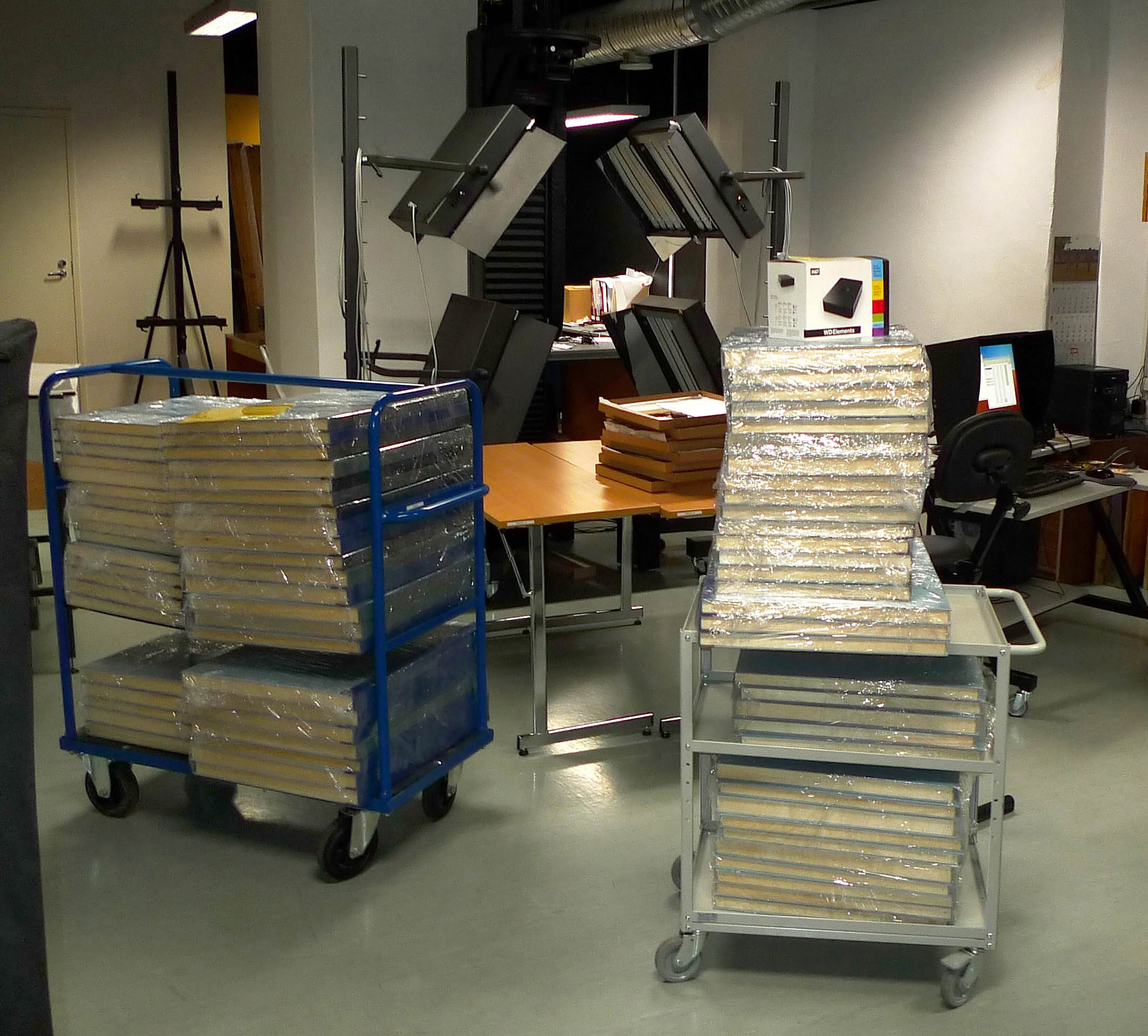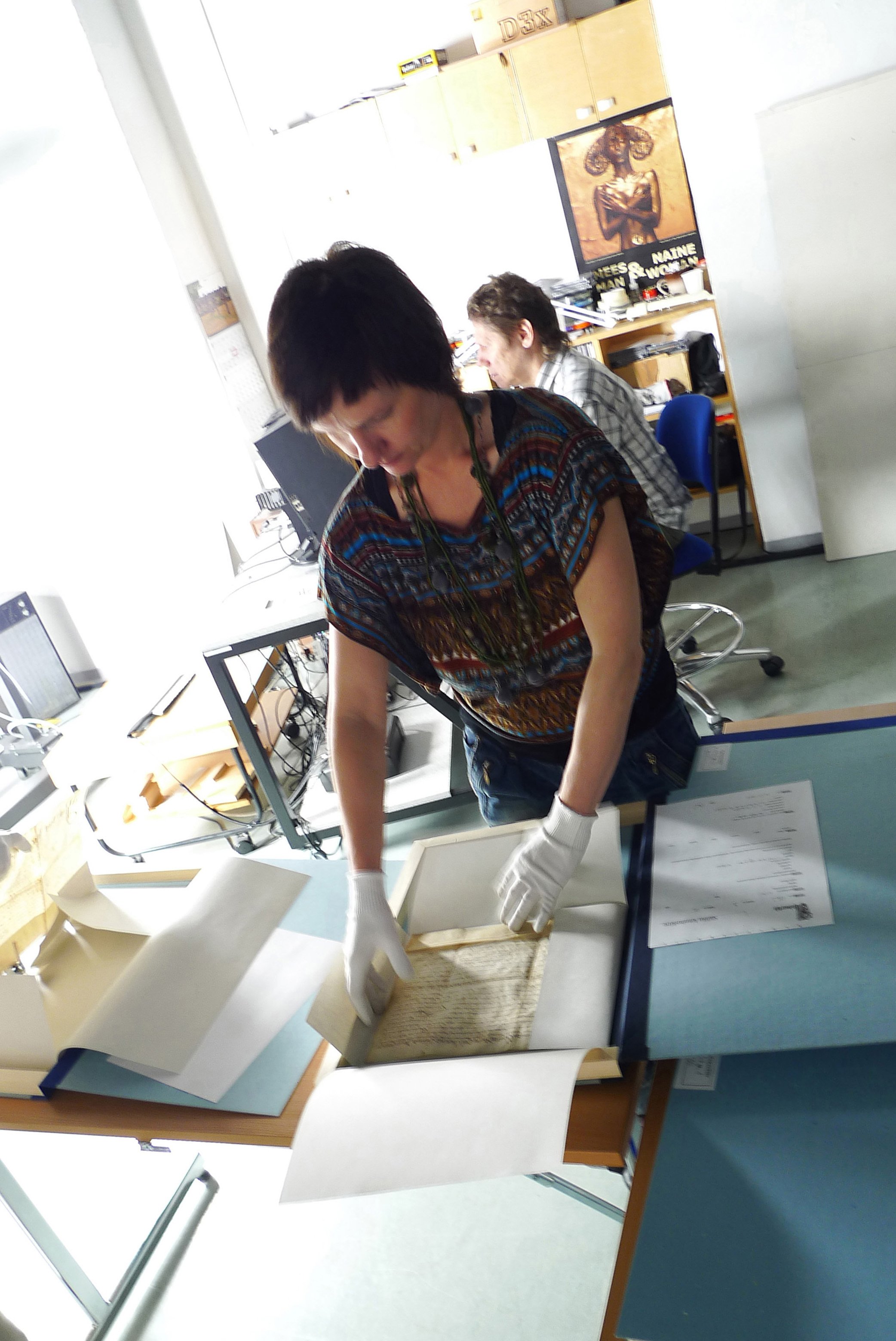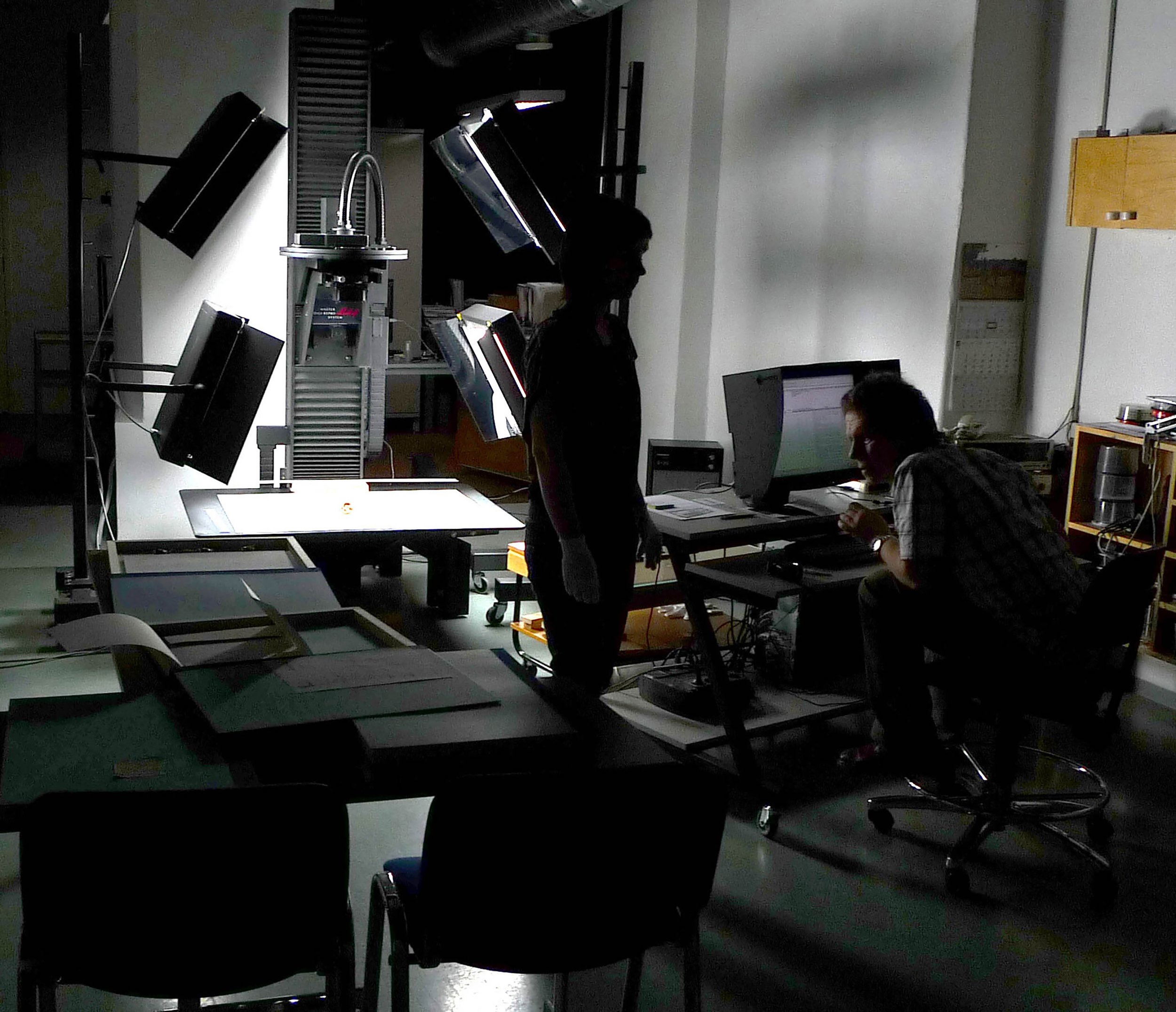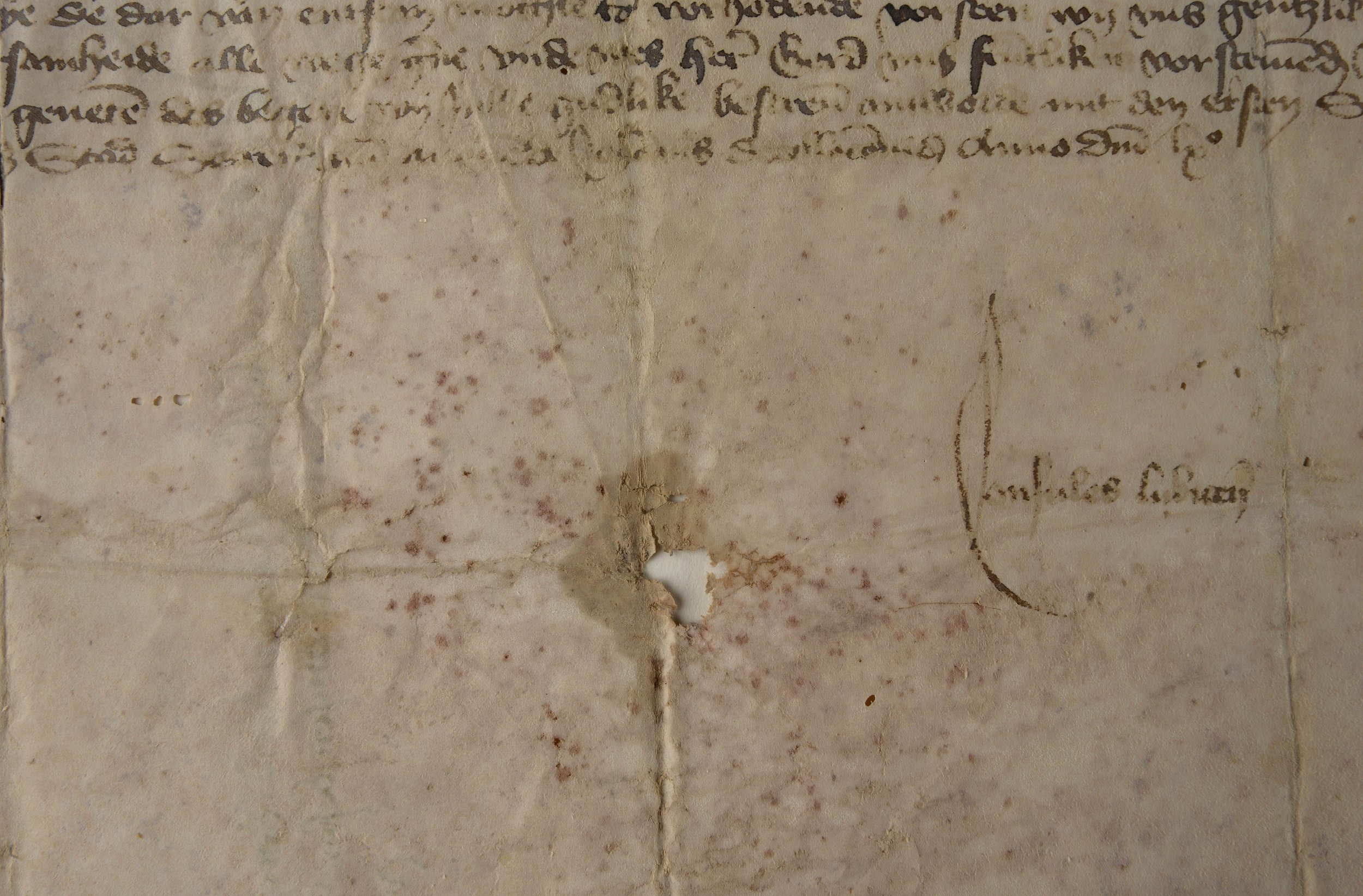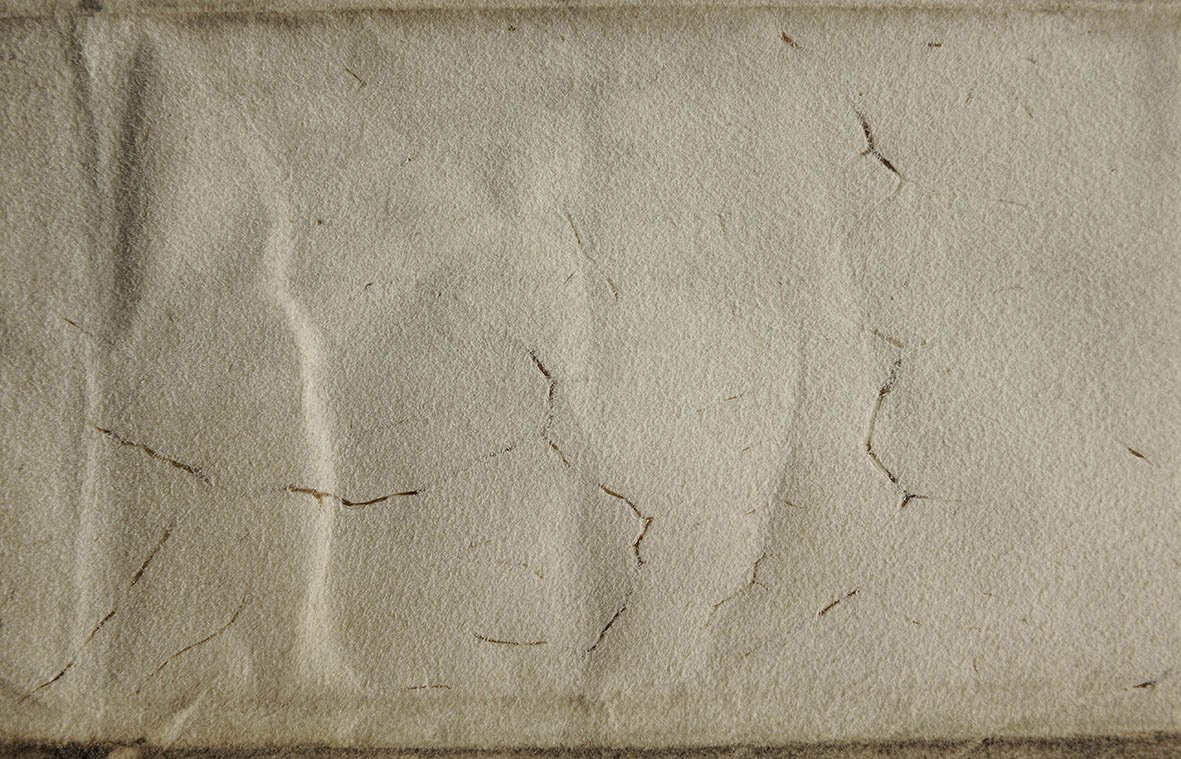SURVEY OF DIGITISATION OF PARCHMENT DOCUMENTS IN 2010-2017
Autor:
Mari Siiner, Andres Uueni
Year:
Anno 2017/2018
Category:
Digitisation
Technical preparations for high-quality digitised reproduction of parchment documents were launched at the SA EVM Conservation and digitisation centre KANUT (further on Kanut1.) in 20082..
With the financial support of the Ministry of Culture a high-quality technical efficiency digitisation system (further on ‘system’) was purchased at the German Company Anagramm GmbH. The most essential parts of the system were Linhof Master Digi Repro System, Lunarea lights system Type 6 (4x6x55W) and Anagramm Production 2 Scanback (3-linear 8000 x 10.000 px, 48-bit colour, sensor size 72 x 118mm).
The software of the Linhof Master Digi Repro System and Scanback allowed precision in rendering colours and the image of the object. The system allows us not only to render the image of the object but also to carry out detailed research of it and make high-quality large prints. The master copies created as high-quality preservation imagas help reduce the risks of the originals disappearing or getting damaged.
The high quality of digitisation depends directly on the size of sensor`s area and the quality of the lenses. The acuity of images was achieved with software (for) leading the system at 0.001mm precision.
This method to digitise parchments was used up to 2017. [fig.1] As the method had justified itself, the system was substantially renovated in 2017 – a new system Rencay Archive “plus”Scanback (12,000 x 19,500 pixel)3 was purchased and a new Lunarea lights system (LED Light Typ4, 5.000 Kelvin, 150watt, daylight).
All the extensive parchment digitisation at the Kanut has been completed by project financing from various sources.
In 2010-2017 the Kanut participated in the digitisation project ‘Digitisation and Online Access of the Estonian Oldest Documentary Heritage (parchments of the National Archives, Tallinn City Archive and Estonian History Museum). The project was financed by the ‘Europena Foundation for Information Society' at the European Cohesion Fund with 1.65 million EEK (kroons), i.e. nearly 100 000 EUR. The National Archives co-ordinated the project.
The aim of the project was to produce high-quality images of the unique parchment manuscripts preserved in the above-mentioned institutions, where they had not been easily accessible to the public. The project was expected to make them accessible via the Internet. The Kanut was responsible for the logistic management of the assignments in the various memory institutions, preparation of the documents for digitisation, the safe handling of the documents depending on their condition and for applying suitable technology and technique to grant the quality of preservation imaging and meet the demands.4
4122 parchment documents dating back to 1237 up to the 20th century from the collections of the National Archives, Tallinn City Archive and Estonian History Museum were conserved and digitised within the project. Nearly 400 archival documents belonging to the History Museum, about 1600 from the National Archives and about 2100, i.e. three fifths in the whole of the biggest Estonian parchment collection – that of the Tallinn City Archive were digitised.
The parchment documents from the Tallinn City Archive had to be totally conserved before digitisation and the conservators of the archive completed the work themselves. The parchment documents of the Estonian History Museum became the responsibility of the Kanut conservators and a specialist from the museum. The documents of the National Archives had already been conserved earlier5.
The necessary conservation and digitisation were done at the Kanut from April 2010 up to February 2012 and since April 2012 the National Archives has provided access to everybody interested on http://www.ra.ee/pargamendid/index.php.
In 2013-2017 the project continued with the parchment documents in the collection of the Tallinn City Archive. In these years the Tallinn Municipality financed the project 59194 EU. About 1500 documents dating from the 15th and 16th centuries and 340 parchment pages from the Tallinn Town Council’s the 15-16th centuries real estate registers (TLA.230.1.Aa35b) were digitised. Technical demands of the project and assignments management were carefully observed. The digitised parchments can be seen and read on http://www.ra.ee/pargamendid/index.php.
Over 4000 documents from the Tallinn City Archive parchment collection have been digitised. Among them are documents, codices, charters of the guilds (called skraas), business ledgers and manuscript books.
Workflow of parchment digitisation, demands on granting the quality of pictures, the methodology of how to grant safety, regulations for creating meta data and the order of digitisation processes at the Kanut in 2010-2017, was co-ordinated between the project participants.
The most essential stages in the workflow were as follows:
1. Receiving the documents [fig.2], [fig.3]
• Checking the integrity and preparedness [fig.4]
• Grouping the documents according to size and their temporary storing I the storeroom of Kanut
2. Conservation (if necessary)
• Dry cleaning of the documents
• Total or local dampening for stretching purposes and stabilisation in a light press
• Arranging the seals
• Documentation of the conservation processes
• Packing the documents according to demands in case the proper wrapping or cover for storing was missing
3 Digitisation [fig.5]
• Arranging the system to be ready for work
• Digitisation of the recto and verso views of the documents with the colour and measuring scale (QPcardTM201) included
• Entitling the files, according to agreed rules
• Checking the quality of the digitised images
• Minimal allowed processing of the picture files
• Creating metadata
4. Returning the archival documents and master files
• Forwarding the master files, after having saved them on the client’s provided hard disk
• Preparing the archival documents for transport
• Returning the documents to the owners
5. Documentation and accounting
• Double-saving backup and longterm preservation the master files in repository of the files in the special storerooms for digitised documents of the Estonian National Broadcasting Company
A database of material characteristics and damages of the parchments was compiled during the work on the projects. This was necessary for the planned atlas of parchment damages. It became possible thanks to the logistics – over 5500 historical parchments were brought to the digitisation department of the Kanut in a very short time. Up to that time nobody had estimated the condition according to accepted methods and during the process of digitisation parchments were to be assessed one by one anyhow. To build up the database for the would-be atlas the working process was arranged accordingly – the assessment of condition was proceeding simultaneously with digitisation and recording the details, characteristic of the material as well as the nature of damages. All the time the schedule of the project had to be followed as well. The compilation of the database for the atlas became possible owing to the high technical level of digitisation. The high resolution at the picture-files reproduction produced an especially high quality of the image. The latter, in its turn, provides additional possibilities to use and study the digital subject.[fig.6], [fig.7], [fig.8]
The following people from the Kanut participated in the digitisation project in 2010-2017 – digitisers Andres Uueni, Martin Sermat, Jaanus Heinla, Liina Michelson and conservators, Tulvi Turo, Sirje Kask, Heige Peets. The project supervisor was Mari Siiner.
REFERENCES:
1. Up to 2015 Conservation Centre Kanut
2. A. Uueni, Pilot project: Creating high-quality digital images from 2D objects, Renovatum, 2010 p 135. https://evm.ee/uploads/files/renovatum_2010_a.pdf
3. http://rencayusa.com/usa_Archive_data.pdf
4. Mari Siiner, Andres Uueni, Pärgamentürikute digiteerimisest Ennistuskojas Kanut aastatel 2010-2012, Renovatum 2012, p178 http://evm.ee/uploads/files/renovatum_2012_a.pdf
Andres Uueni, Mari Siiner, Parchment Manuscript Preservation Imaging. The 9th Baltic States Triennal Restorers meeting Preprints, Vilnius 2011, pp.371.
5. Conservation project carried out in 2000-2006 by Eve Keedus. “Survey of the Activities at the National Archives in 2005-2006”

